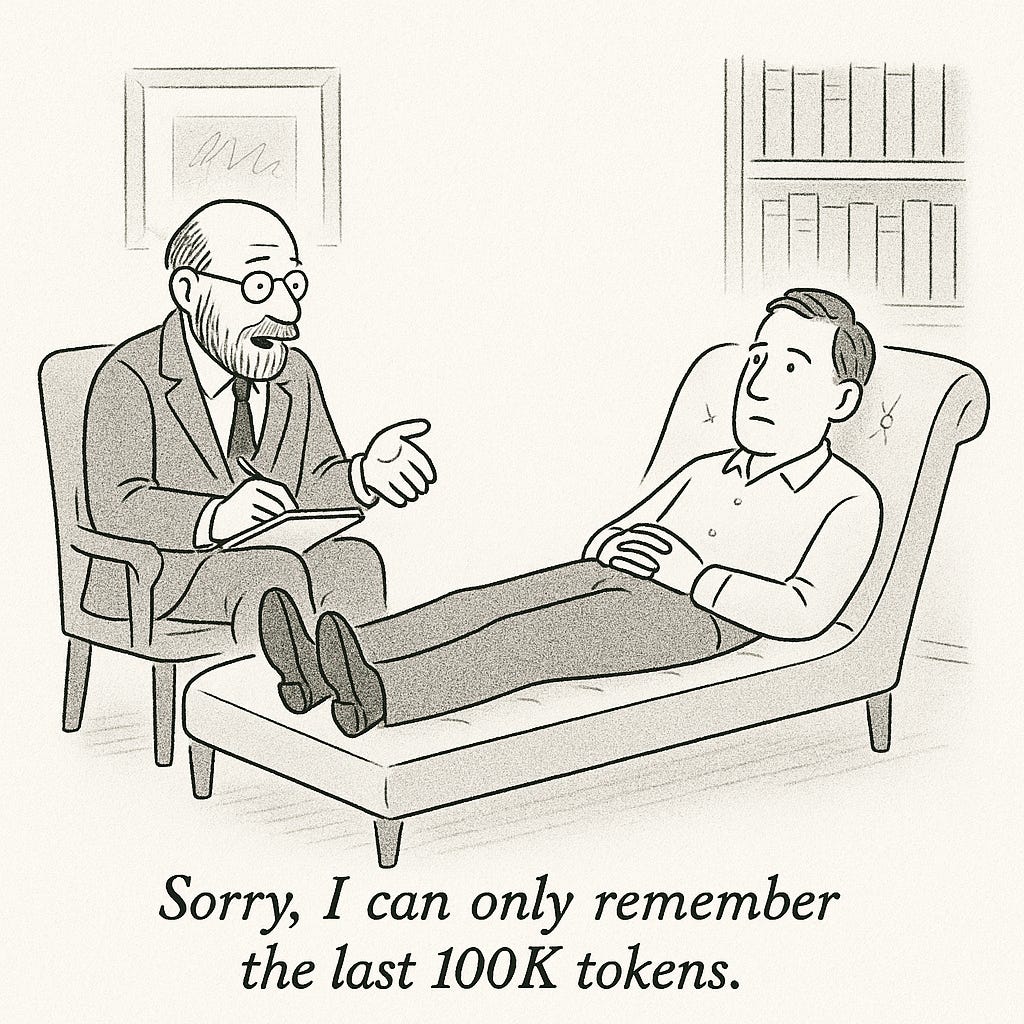In many regards, I find LLM therapy (Claude specifically; ChatGPT sucks for therapy) better than human therapy. However, it’s important to use it in the “right” way. And the right way to use it is not in a “chat” fashion, with short back-and-forth messages. Instead, you should write long stream-of-consciousness braindumps, providing as much context as possible. Basically, you should just treat it like a journal that happens to talk back to you.
One reason to send long messages is because if you send short messages, the model generally will be biased to send short messages back and remain in a “chatty” mode. In particular, it will avoid doing deeper analysis. But if you send a big long message with a lot of context, it will tend to do more holistic analysis and be more “thoughtful”.
From the technical side of things, it seems likely to me that RLHF tuning primarily focuses on single-turn interactions – after all, single-turn data is easier to acquire and easier to evaluate than multi-turn data. As such, I think that the models likely perform better in fewer-turn interactions. So that’s why I think long messages work better than breaking things into many short messages sent over many turns. But this is just a hypothesis; I work in AI but not in LLMs specifically so I have no direct knowledge.
Another strategy for Claude therapy is to use Claude’s “Projects” feature. Generally try to keep each session focused on one specific topic. When a session feels like it’s gotten too long or it feels like it’s reached a conclusion, ask Claude to write a detailed summary. Then copy that summary into a new document which you upload to that Project, so that future chats have it in the context. As you keep doing this, the benefits compound, as the model now has more and more context about you, and can make deeper and deeper connections in its analysis. This is essentially the same as ChatGPT’s “memory”, except that you have control over what is included in the memory.
You have to be somewhat careful, though, and you can’t just blindly trust that the summaries are correct. They are sometimes inaccurate, which will taint your future sessions. But that’s also true of a human therapist, whose memory will be imperfect. In both cases, you’ll have to correct the therapist. For Claude, you may also have to go back and manually edit the context document. You still have to put in work; there is still no free lunch.
As for the therapy itself: One of the functions of a therapist (but not the only function) is just to be a sounding board, an interlocutor, who is able to understand what you’re saying without judgment, and reflect it back to you, perhaps in a cleaner or more organized form. For many people, including myself, the act of verbally discussing my thoughts through many iterations is the best way to process something. When you have a more practically-oriented problem, LLMs work just as well as a human therapist, if not better, because they can suggest essentially every possible common strategy for your problem. So working through practical problems with the LLM therapist to find potential solutions is a much more efficient process.
On the other hand, an LLM therapist may not work as well on emotionally-oriented problems, where you may need deeper empathy from a human (or the illusion of such empathy). Another important part of human therapy is transference: Transferring feelings you have about other people onto the therapist. The relationship with the therapist, who is also a human with all the same human flaws that we all have, becomes a sort of virtual stand-in for your other relationships, and a place where those human dynamics can be played out.
The LLM is not human. It is superhuman: it’s infinitely patient, it’s super fast, and it knows about almost everything. It’s possible to make the LLM pretend to not be superhuman, but it’d nevertheless not be its “natural” state. So it seems unlikely or at least very difficult to play out human relationship dynamics – anger, jealousy, resentment, disappointment, love, tenderness, affection, inspiration, mentorship, and so on – with an LLM.
Nevertheless, having an 24/7 on-demand superhuman therapist is an amazing tool that cannot be undersold. At worst, LLM therapy is like having instantaneous access to every self-help book ever written. No self-help book on its own will ever directly solve any of your problems, but the tools they contain are still valuable and often not something you can come up with independently on your own. The LLM can help you to become aware of such tools and personalize them to your unique context. You still have to make use of them.




